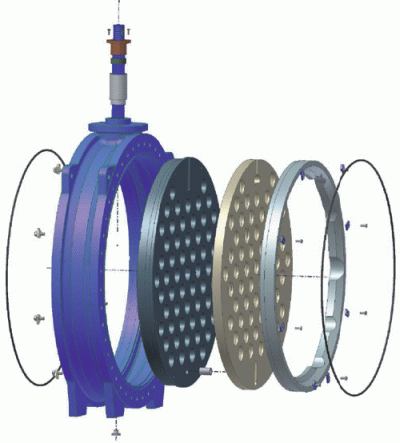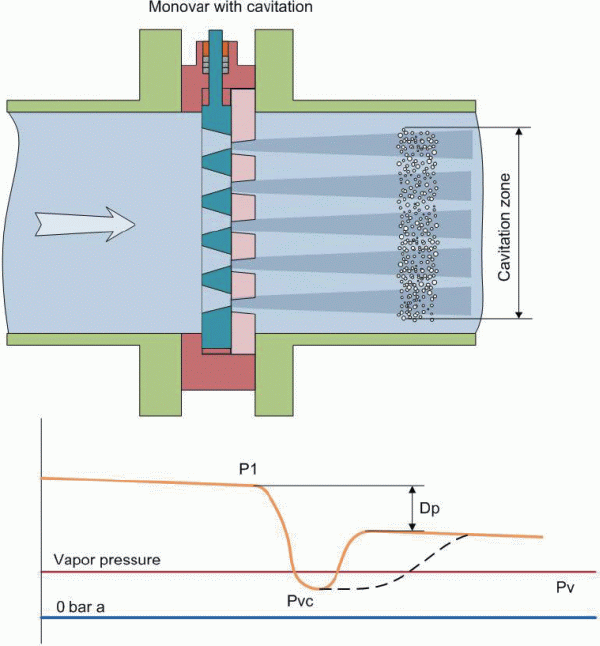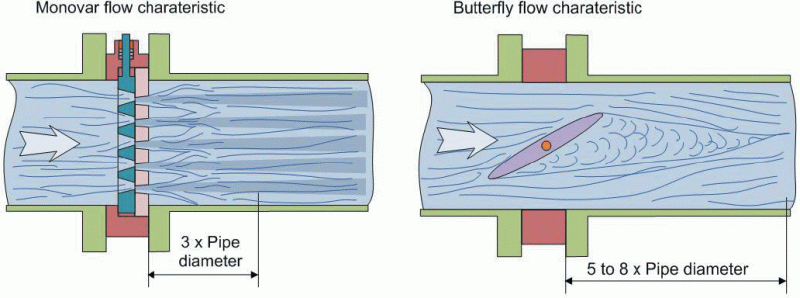 Controlling water within pipelines presents some difficult challenges for the industrial process, water and utilities industries. Standard butterfly valves are often used in such applications, but the damaging potential of cavitation and water hammer means they are not always the preferred product. Here, René van der Gaag, product manager for special service valves, Tyco Flow Control, discusses how Tyco Valves & Controls’ latest control valve offers a solution that can meet the challenges
Controlling water within pipelines presents some difficult challenges for the industrial process, water and utilities industries. Standard butterfly valves are often used in such applications, but the damaging potential of cavitation and water hammer means they are not always the preferred product. Here, René van der Gaag, product manager for special service valves, Tyco Flow Control, discusses how Tyco Valves & Controls’ latest control valve offers a solution that can meet the challenges
Standard butterfly valves are present throughout the water and industrial process industries due to cost, weight saving and ease of maintenance. Features of such valves include high flow capacity, short face to face dimensions and large rangeability. These valves are generally suited to ANSI class pressure ranges from 150 to 300 and a temperature range of -30°F to 150°F.
 However, it is also accepted that conventional butterfly valves are not the preferred product when it comes to pressure control due to limited differential pressure. As a general rule, once pressure on the valve disc exceeds 30% of the inlet pressure, then a standard butterfly valve may start to cavitate. Cavitation causes wear, damage and noise increase. Wearing away of valve components can lead to not only destruction of the valve itself but could require shutdown of the equipment whilst damaged components are replaced if the problem is not addressed.
However, it is also accepted that conventional butterfly valves are not the preferred product when it comes to pressure control due to limited differential pressure. As a general rule, once pressure on the valve disc exceeds 30% of the inlet pressure, then a standard butterfly valve may start to cavitate. Cavitation causes wear, damage and noise increase. Wearing away of valve components can lead to not only destruction of the valve itself but could require shutdown of the equipment whilst damaged components are replaced if the problem is not addressed.
So if there is a risk of cavitation, why are butterfly valves considered for use instead of more conventional pressure control products? One reason is the short face to face dimensions of butterfly valves are useful for plant operators looking to use space more efficiently and include more equipment within the same footprint. However, pressure control limitations of butterfly valves, in combination with the damaging potential of cavitation and water hammer, have required plant operators to make a compromise. However, there is now a solution which blends the benefits of standard butterfly valves with a new approach to controlling pressure and flow within water pipeline applications.
 In order to overcome the issues of space restriction and cavitation and address the water industry’s requirements, Tyco Valves & Controls has developed a unidirectional control valve featuring a multi-jet design. Providing accurate flow and pressure control, whilst minimising noise and cavitation, Monovar is a low pressure recovery valve which is able to operate at a higher differential pressure than typical butterfly valve products.
In order to overcome the issues of space restriction and cavitation and address the water industry’s requirements, Tyco Valves & Controls has developed a unidirectional control valve featuring a multi-jet design. Providing accurate flow and pressure control, whilst minimising noise and cavitation, Monovar is a low pressure recovery valve which is able to operate at a higher differential pressure than typical butterfly valve products.
Monovar uses a sliding plate design which involves one moving plate upstream, one fixed plate downstream and approximately 56 tapered control ports. This results in a more effective and efficient operation in comparison to butterfly valves. The Monovar valve operates at a differential pressure which is 80% of the inlet value, with a pressure range of 50 bar, or 725 psi, and a temperature range from -60°F to 390°F.
The multi-jet design of the Monovar control valve helps to reduce the destructive effects caused when a valve starts to cavitate. The multiple distributed jets divide the flow, thus controlling energy dissipation to ensure accurate and stable performance. In the case that cavitation does occur, the implosion of gas bubbles will now be located in the jet stream at the pipe centre due to the design of the valve. Therefore the shockwaves caused by the implosions cannot reach the solid pipe wall, so although noise levels will increase, equipment is protected from damage caused by pipeline turbulence. This makes the Monovar valve suitable for high pressure drop applications. High quality alloys and coatings maximise the product’s lifecycle.
 Short face to face dimensions compared with other high dissipating valves, in addition to quick flow recovery, allow the end user to install other components close to the valve. These two features allow efficient installation, freedom in piping design and compact housing. As the obstruction is perpendicular to the flow stream and there is a high number of small port diameters, flow turbulence is limited. Flow can therefore be stabilised within two times the pipe diameter instead of the five times typically required for a butterfly valve.
Short face to face dimensions compared with other high dissipating valves, in addition to quick flow recovery, allow the end user to install other components close to the valve. These two features allow efficient installation, freedom in piping design and compact housing. As the obstruction is perpendicular to the flow stream and there is a high number of small port diameters, flow turbulence is limited. Flow can therefore be stabilised within two times the pipe diameter instead of the five times typically required for a butterfly valve.
Monovar valves are already being used in the water industry – 17 control valves have been specified and installed on a new municipal water project in North America. The DN 2100 valves are a key component for accurate flow and pressure control within the ultraviolet disinfection facility, with approximately nine billion litres of water passing through the valves per day.

